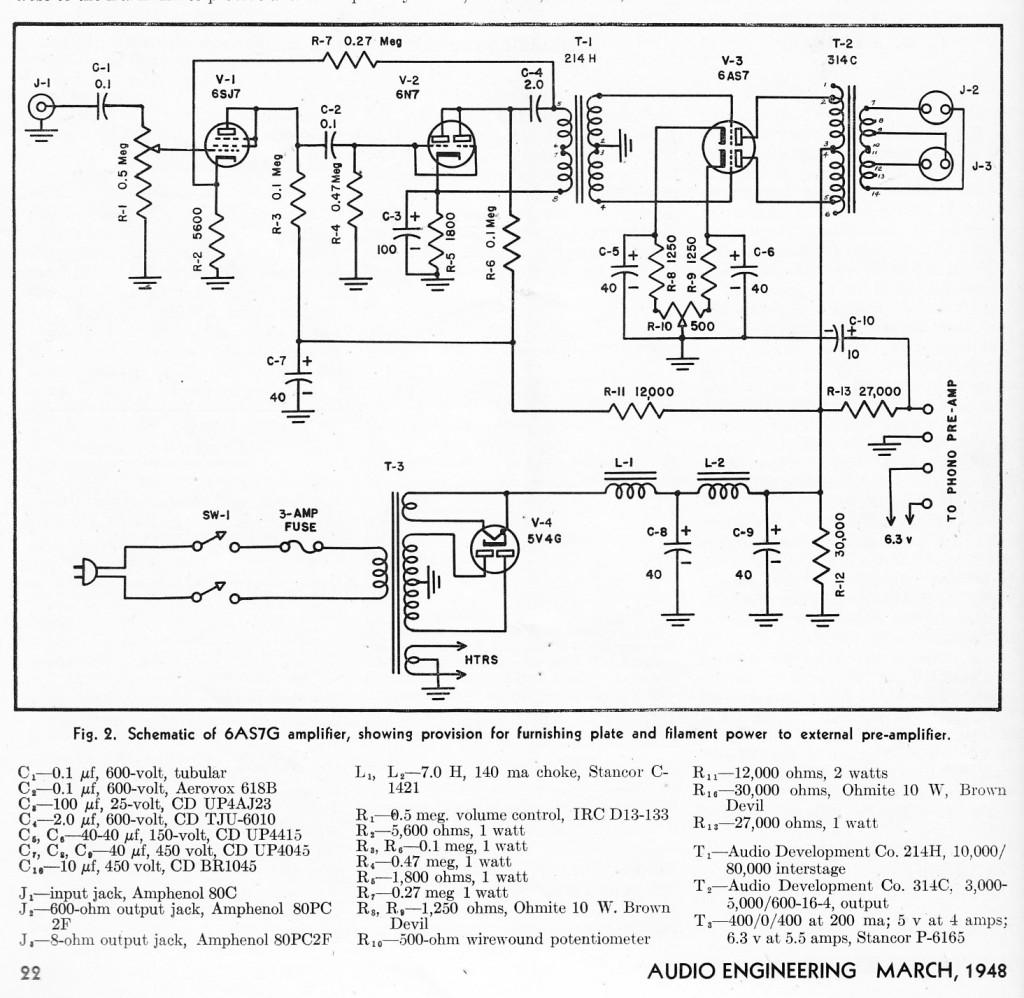 Today we’ll look at some of the more interesting audio-circuit plans and schematics from the first two years of Audio Engineering magazine. Pictured above is a great lil’ amplifer (approx. 30watts) that uses a single 6AS7G tube for push-pull output. I’ve never used these tubes, but they are real cheap. Apparently they are sorta like 2 2A3 triodes in one envelope. Except that they cost $13, rather than $200 for a vintage 2A3.
Today we’ll look at some of the more interesting audio-circuit plans and schematics from the first two years of Audio Engineering magazine. Pictured above is a great lil’ amplifer (approx. 30watts) that uses a single 6AS7G tube for push-pull output. I’ve never used these tubes, but they are real cheap. Apparently they are sorta like 2 2A3 triodes in one envelope. Except that they cost $13, rather than $200 for a vintage 2A3.
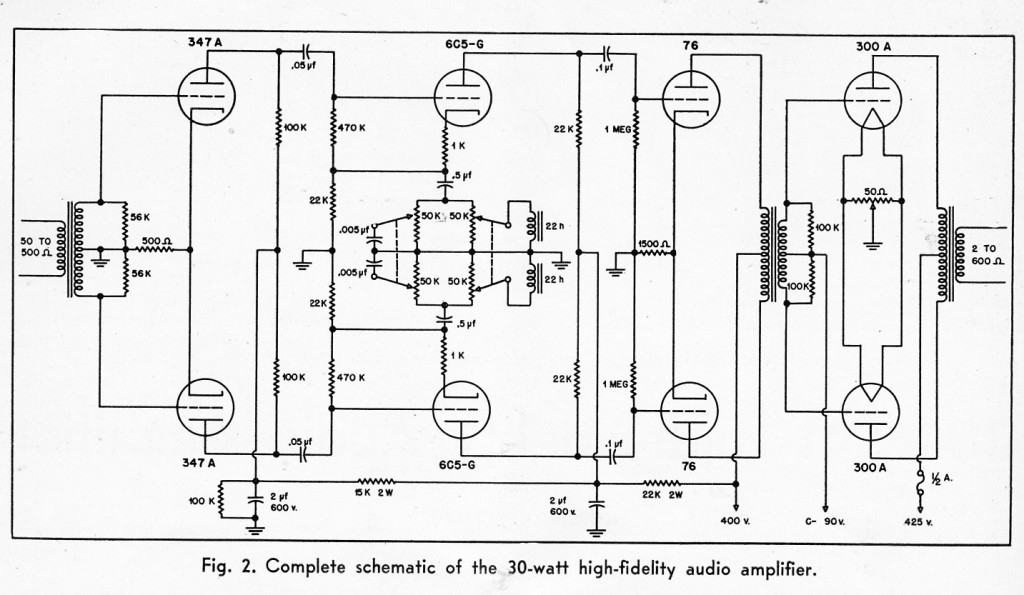 A fully-balanced 30-watt amp using about a million dollars in tubes.
A fully-balanced 30-watt amp using about a million dollars in tubes.
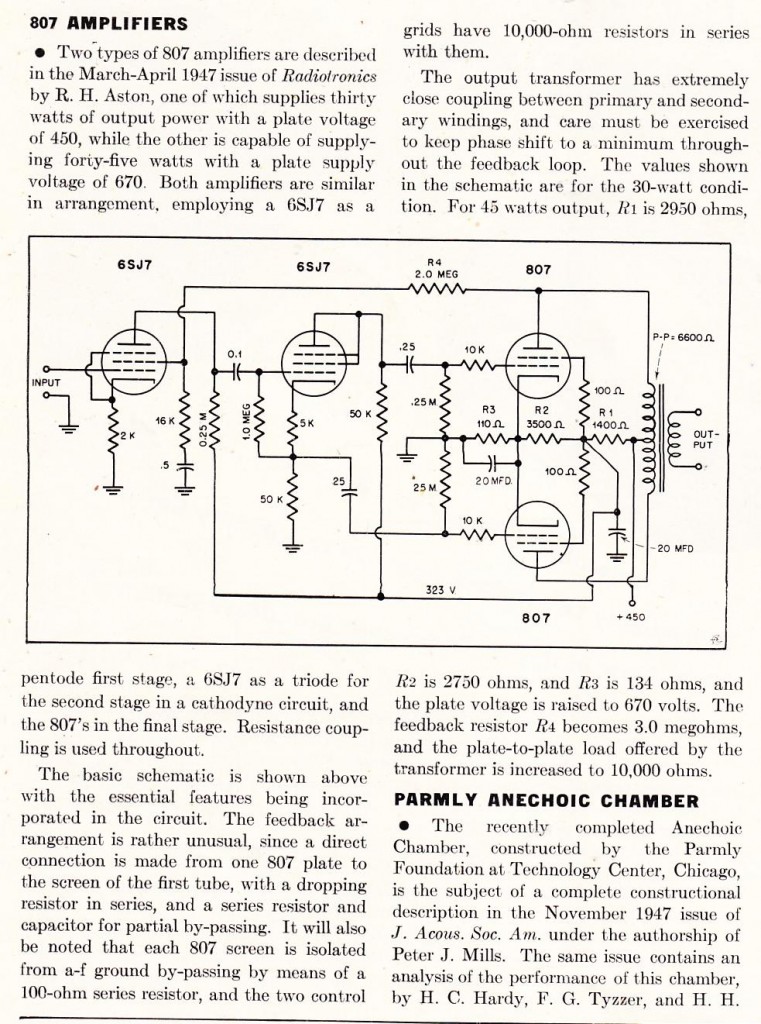 another 30-watt amp, this time using the very cheap 807 tubes. The 807 is similar to a 6L6, except that the grid connection is on a top cap. 807s can also handle crazy high voltage.a
another 30-watt amp, this time using the very cheap 807 tubes. The 807 is similar to a 6L6, except that the grid connection is on a top cap. 807s can also handle crazy high voltage.a
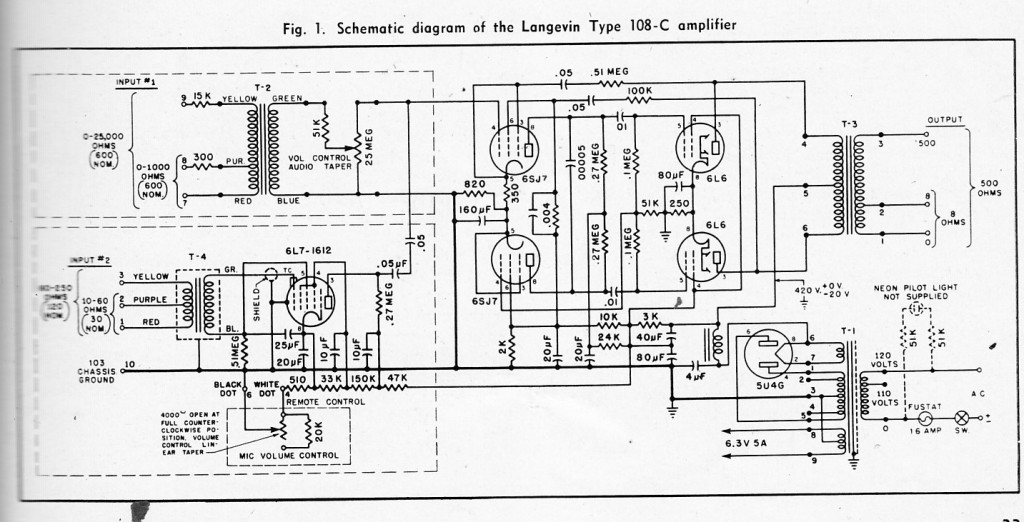 A schematic for the venerable Langevin 108C, which was apparently a very popular choice for industrial audio distribution in the ’40s.
A schematic for the venerable Langevin 108C, which was apparently a very popular choice for industrial audio distribution in the ’40s.
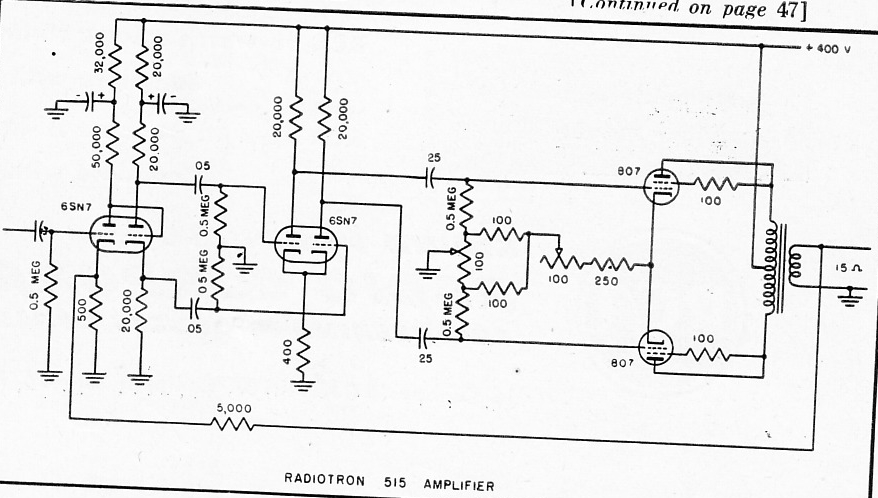 Another 807-based amp; this one is an RCA Radiotron model 515. This looks like a great circuit. Wish I had kept those 807s i found last year…
Another 807-based amp; this one is an RCA Radiotron model 515. This looks like a great circuit. Wish I had kept those 807s i found last year…
5 replies on “Audio Engineering Magazine Pt 4: Schematics”
The 6AS7 has a mu of 2 or thereabouts, which means it needs a LOT of drive.
Using a driver transformer is one way to do it.
Using a power supply with a straight output in the 200 volt range (it’s a low B+ design too) and a voltage doubler for the driver section, or a tapped PT secondary, would be another. The driver tube needs to swing as much as the B+ of the output tube itself, so must have nearly twice the B+ itself.
With the 807, it is the plate, not the grid, that is on the top cap.
The very cheap 1625 is identical to the 807, except that it has a 12.6 Volt filament.
All the best,
Kevin Strom.
The 1625 also has a seven pin base. The 807 has a five pin base.
Figure 2 is the Curtis Schafer amp in the first Audio Anthology. It would be a good thing to reprint Mr. Schafer’s comments on these.
I met him in the late seventies: he was still active then, and that was in Chicago as I recall. I remembered his name from an article in one of the audio magazines at that time and we talked, but not about this stuff. If I had only known….
There is no way a 6AS7 is going to give thirty watts out.
In push pull with itself maybe ten, probably less. NEVER try to parallel the triode sections, they always differ a lot because of how the tube is made.